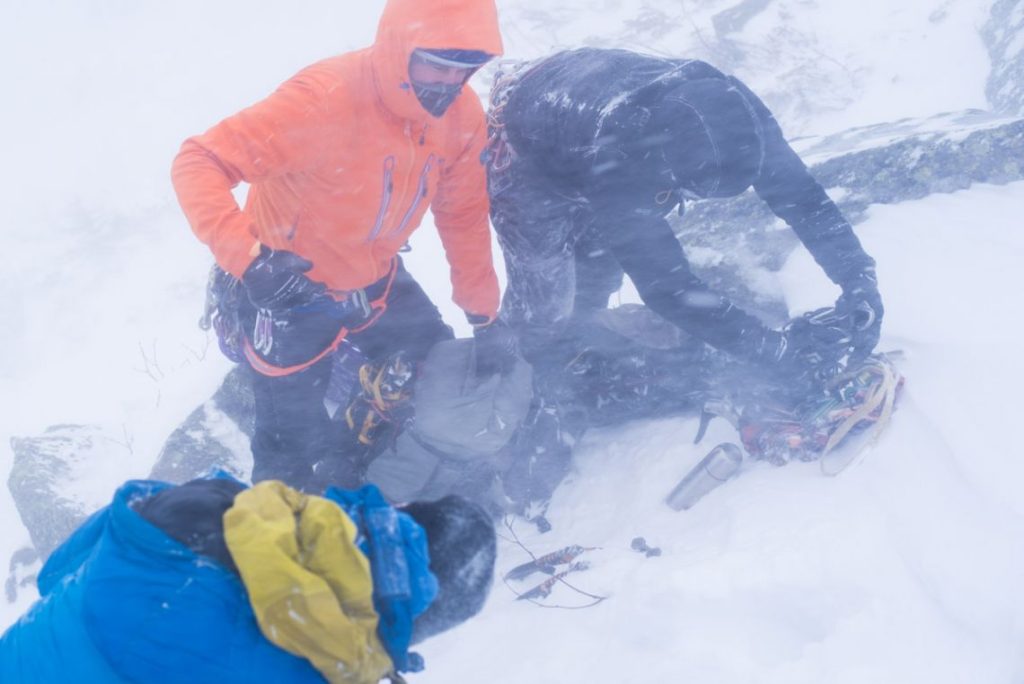
This week's We Are f-stop story comes from New Hampshire based professional photographer, Joe Klementovich. Like many successful outdoor adventure photographers, Joe first followed his passion for the outdoors, migrating north to the White Mountains of New Hampshire to pursue rock and ice climbing. His work has been featured in publications and ad campaigns nationally, as well as the New York Times and and takes him from the cold New Hampshire to the Florida everglades. In this story he's staying home, giving us an insight into shooting in the harsh weather of the highest peak in the Northeastern United States, Mt Washington.
Words and photos: Joe Klementovich

If you’re not from New England you’re most likely not familiar with Mount Washington. It’s our local “big” mountain. For generations mountaineers, climbers, hikers and skiers have tested themselves on the “Rockpile” At 6288 feet it’s not about the altitude but more about its location that makes it a mountain to be wary of. Dipping Arctic lows and the jet stream often meet and create days of 100 mph winds and -20F temps. Not ideal for fiddling with camera gear, mittens or anything else for that matter. It does create incredible scenes, frosted faces, wind sculpted snow and sweeping vistas of mountains and clouds crashing together.

Unlike most mountain ranges The Presidential Range, Mount Washington being the center of it, has lots of access points and is a short drive from Boston, Portland and New York. So there are lots of opportunity to capture people out in the elements, small figures on lonely ridges, goggle clad mountaineers coated in frost and the like. On the other hand the rugged weather keeps the crowds down and allows for untracked snowfields to be explored. If the weather turns and clouds descend it’s like being on another planet. Having the skills and gear to get through tough weather and into unique places is important and a priority for survival and making unique images, but it adds more weight and takes up more space, ice axes, crampons, helmet.

As a photographer carrying gear is an unfortunate part of the job, lenses, tripods, etc all add up way too quickly and above treeline in winter light is fast and fast is better than slow. Access to gear is key, zippers gotta work and have to be big to grab with gloves on and everything has to hold up in sub zero temps and driving winds. The little things mean everything when it’s blowing 60 mph and the storm clouds are rolling in. For example, changing lenses in blowing snow is a recipe for disaster, which forces me to carry a couple bodies, going back and forth has to be efficient but two bodies…. more weight - more space but the price to pay for creating a solid variety of images.

Often times I get to a location with just my base layers on and a windbreaker, it keeps the sweat to a minimum and that’s critical on really cold days. Once I settle into a spot and know I’ll be shooting for a while I dig out my big fat down layers. I also stuff batteries into inside pockets to give them a bit more life. All these layers take up room but thankfully don’t weigh much. Having access to warm layers quickly keeps hands warm, and fully functional. Knowing where gear is makes everything better, faster and in the end more comfortable. On a windy day a loose jacket is gone before you can string a couple swears together.
I’m an impatient photographer by most standards sitting behind a tripod for hours on end doesn’t work for me and on these winter days it’s probably a good trait to have.
On the move again, stow gear, drop layers and start post-holing through thigh deep snow trying not to get too sweaty but chasing the last light requires a bit more speed a bit more sweat. The wind is shifting and ramping up and the sun has dipped below the ridge, time to head downhill and go warm up. It’s a long six months of winter up here.

Joe's photography takes him from assignments in the sub-zero ravines of New Hampshire's Mount Washington to the bug infested mangrove islands of the Florida Everglades fly fishing for tarpon have appeared in print nationally. His work has been the cornerstone of national ad campaigns for Mission Athlete and Voltaic Systems and Sterling Rope. He says:
"I thrive on creating authentic imagery for editorial and commercial clients in unique and difficult locations. I feel that my photojournalist background works well with commercial projects committed to real storytelling. My freelance career includes working with The New York Times, Boy’s Life Magazine, Fly Fisherman and many others that place a premium on capturing real people, places and the stories they tell."
Find more of Joe's work on his website, Instagram and Twitter profile.
"We Are f-stop" is for all f-stop users to share their stories from the field, from small daily adventures to epic travels. Contact us with your story on Facebook or drop us an email to [email protected] and let us know where your photography takes you and your f-stop pack!
SHOP ALL GEAR MORE WE ARE f-stop


©2022 F-stop


Discount Applied Successfully!
Your savings have been added to the cart.